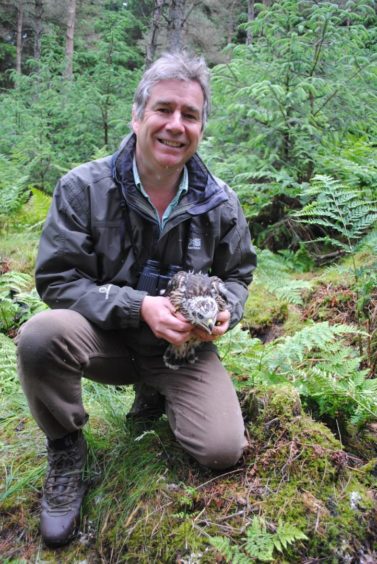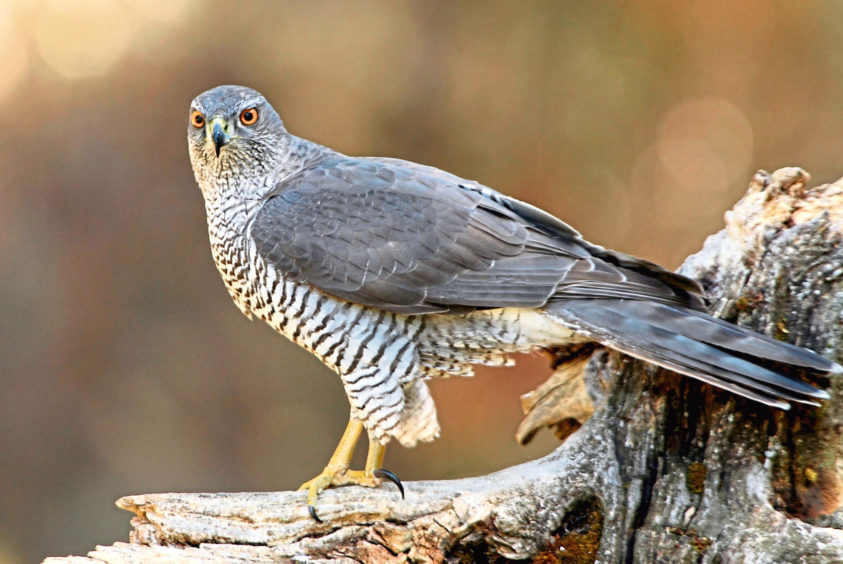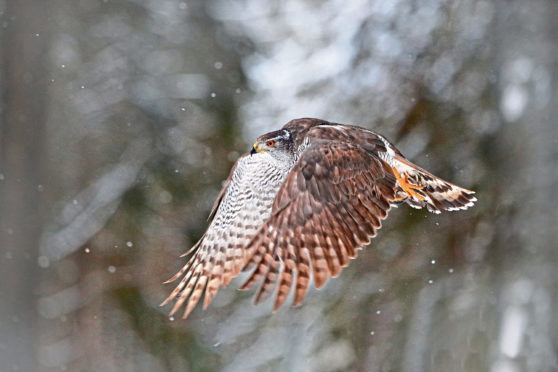It was a tantalising glimpse, no more than that, but just enough to identify the large grey bird that weaved its way through this forestry plantation in southern Perthshire as a female goshawk.
Indeed, back in the spring in the same area, I had watched a goshawk engage in a jaw-dropping looping aerial display flight above the trees. This consisted of a steep dive on slow-flapping wings, before suddenly shooting upwards with wings held close to the body, a process which was repeated several times.

The goshawk is one of our most impressive birds of prey yet is so seldom seen it is sometimes dubbed as ‘the phantom of the forest’. It is astonishing how such a sizeable bird (females are almost the size of a buzzard) can go about their business largely unseen.
This is a bird that lurks deep within the forest shadows, often sitting for hours on a secluded perch, waiting and watching. Then, a crow is sighted in a clearing lower down the wooded slope and aided by the pull of gravity the goshawk swoops in for the kill, twisting and turning in the final moments before plucking its quarry out the air.

It is little wonder that with such sublime hunting skills the goshawk has long been revered by falconers and in hierarchical terms in the past was known as the yeoman’s hawk. The goshawk was formerly widespread in Scotland, but a combination of deforestation and persecution had virtually exterminated it as a native breeder by the late 19th century.
However, from the late-1960s onwards breeding became more regular due to new birds arriving on the scene, mainly from deliberate releases by falconers, as well as from escaped birds. The number of breeding pairs has steadily built up since then, and it now occurs in low numbers in several parts of Scotland, including Courier Country.
While shooting interests are concerned that goshawks will sometimes take game birds, perhaps a more conciliatory view should be adopted by those worried by its presence, for it eats a wide range of other prey too, including creatures many estates might regard as pests such as crows, pigeons, grey squirrels and rabbits. Besides, goshawks belong here, and are an integral part of a healthy natural environment, and as such, should be cherished and welcomed.
As I made my back along this Perthshire forestry track, the unexpected happened, for the goshawk suddenly materialised, swooping low over an area of clear-fell on fast-beating wings. The phantom of the forest had revealed herself once more, and as she disappeared into a thick stand of spruces, I wondered whether her mate was secluded in the forest nearby, watching my every move with his deep penetrating eyes.
I found such a possibility most compelling, for the goshawk is part of the forest’s inner fabric, woven into its very soul.
Info
Nesting in forests and large woods, goshawks are most easily seen in late winter and spring, when pairs perform spectacular aerial displays over their woodland territories.










